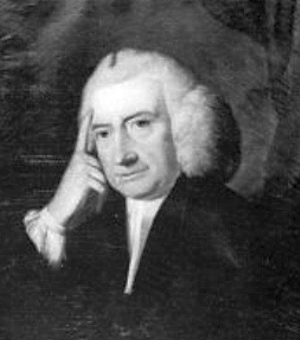William Borlase facts for kids
Quick facts for kids
William Borlase
|
|
|---|---|
 |
|
| Born | 2 February 1696 Pendeen, Cornwall
|
| Died | 31 August 1772 (aged 76) Ludgvan, Cornwall
|
| Nationality | British |
| Alma mater | Exeter College, Oxford |
| Scientific career | |
| Fields | Geologist, naturalist, antiquary |
William Borlase (born February 2, 1696 – died August 31, 1772) was a British expert from Cornwall. He was a geologist (someone who studies rocks and the Earth), a naturalist (someone who studies nature), and an antiquary (someone who studies old things).
From 1722, he worked as a church leader (Rector) in Ludgvan, Cornwall. He lived there until he passed away. William Borlase is best known for his books: The Antiquities of Cornwall (published in 1754) and The Natural History of Cornwall (published in 1758).
Contents
Early Life and Studies
William Borlase was born in Pendeen, Cornwall, on February 2, 1696. His family had lived in Cornwall for a very long time.
He went to Exeter College, Oxford, starting in 1713. After finishing his studies, he became a church minister in 1719. In 1722, he became the Rector of Ludgvan. Later, in 1732, he also became the vicar of St Just, which was his hometown.
The garden at the Rectory, where Borlase lived, was started by him. It later became famous for its beautiful trees and plants.
Discovering Cornwall's Secrets

The area around Ludgvan had many rich copper mines. These mines were full of interesting rocks and fossils. William Borlase started collecting these natural treasures. This led him to deeply study the natural history of Cornwall.
In 1750, he became a member of the Royal Society. This is a very old and respected group for scientists. In 1754, he published his first major book, Antiquities of Cornwall. This book was all about the ancient history and old objects found in Cornwall.
He also wrote Observations on the Ancient and Present State of the Islands of Scilly in 1756. This book looked at the history and importance of the Scilly Islands.
His most famous book, Natural History of Cornwall, came out in 1758. It described the plants, animals, and geology of Cornwall. It even included a part about the people of Cornwall and their native language.
Sharing His Discoveries
William Borlase gave many of his fossils and ancient items to the Ashmolean Museum in Oxford. These were the same items he wrote about in his books. The university thanked him and gave him a special degree.
He knew many important writers of his time, like Alexander Pope. They wrote letters to each other for a long time. Borlase even sent many rocks and minerals for Pope's special grotto (a cave-like garden feature) at Twickenham. He also sent collections of rocks and fossils to other natural history experts in Europe.
His Family and Personality
In 1724, William Borlase married Anne Smith. They had six sons, but two of them sadly passed away when they were very young. Three of their remaining sons also became church ministers. Anne Borlase died in 1769.
William Borlase was a caring minister to the people in his church. He was also an amateur painter. Some of his old papers are kept safe at the Morrab Library in Penzance.

